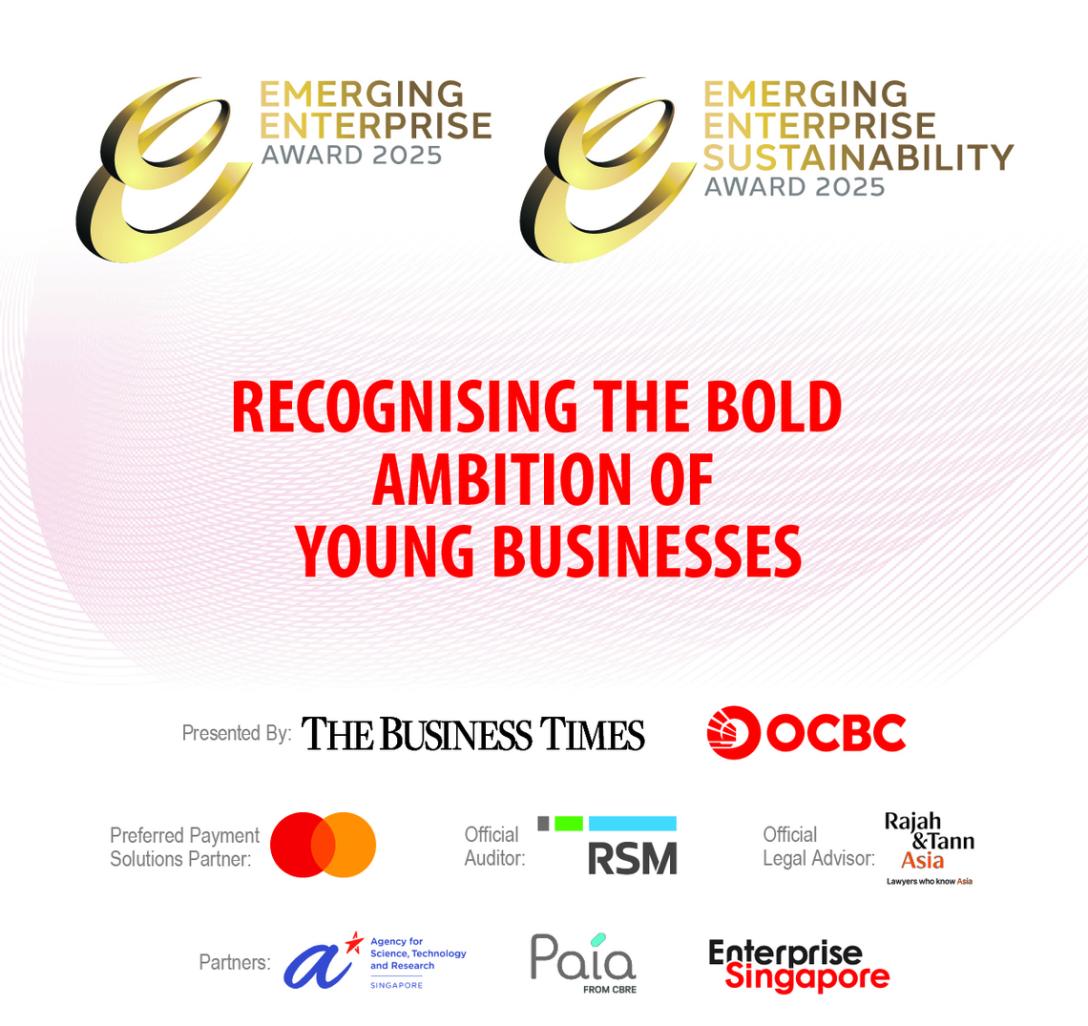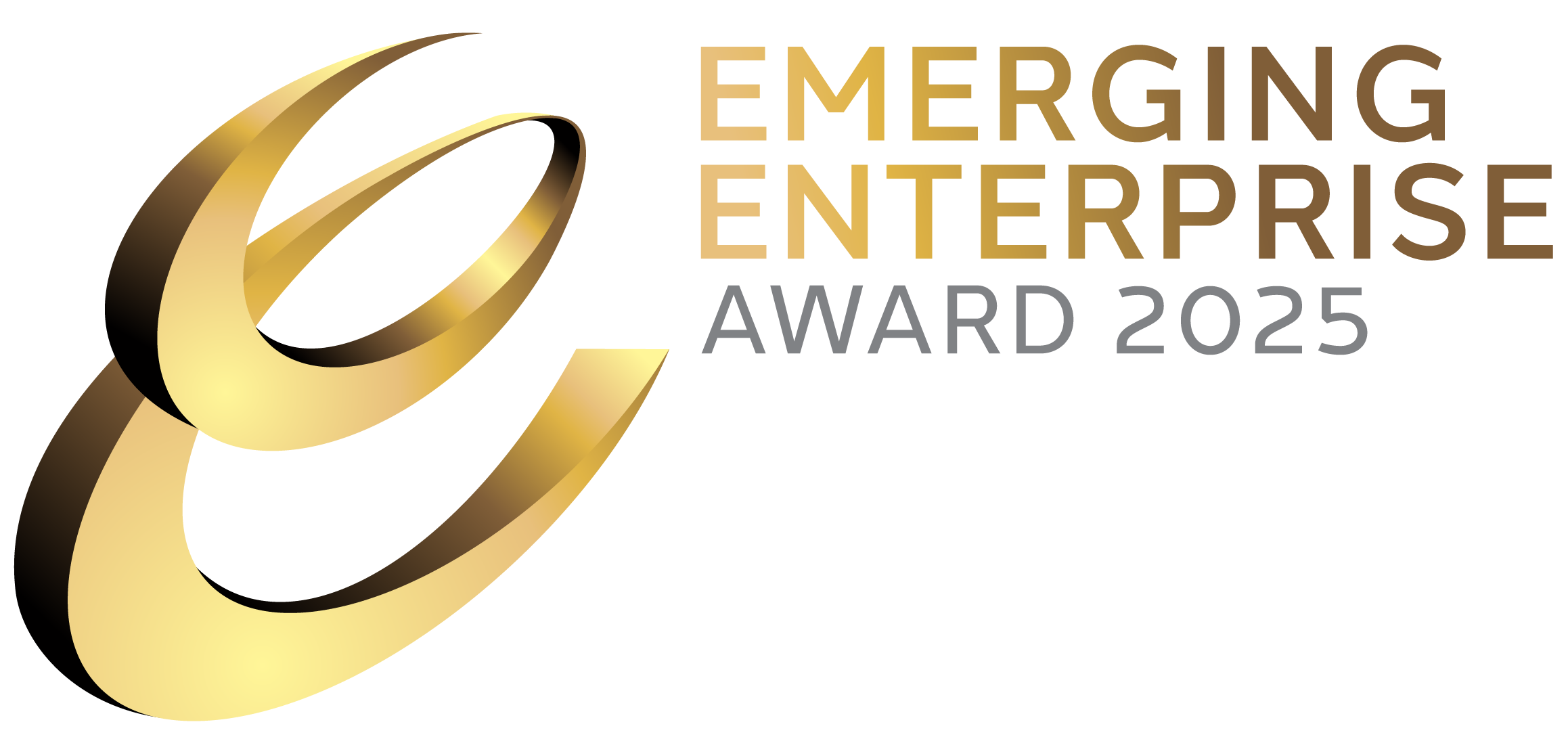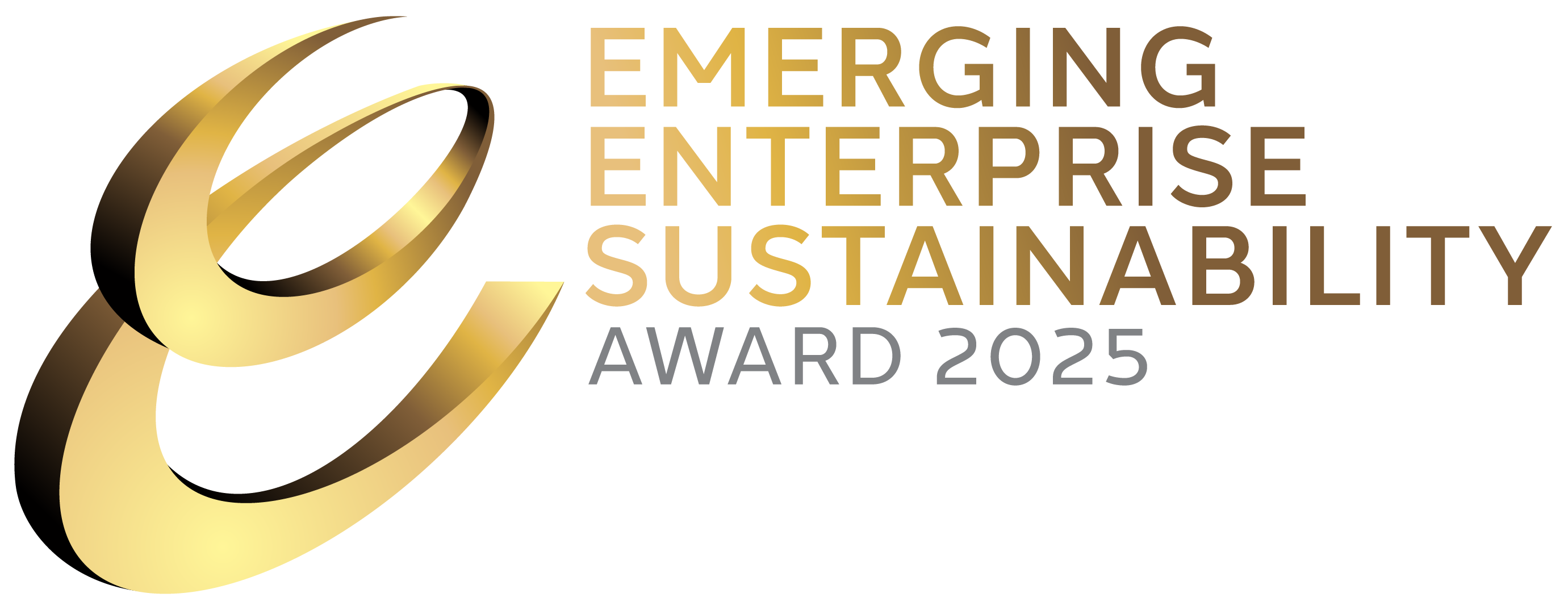[SINGAPORE] A truly sustainable business is one that embeds its green efforts throughout its operations and key performance indicators (KPIs), while viewing decisions through a sustainability lens, said the judges of the Emerging Enterprise (EE) Sustainability Awards, presented by The Business Times.
As they mull over which companies should be recognised for their efforts, they share practical steps that small and medium-sized enterprises (SMEs) can take to begin their sustainability journey.
ROUNDTABLE PANELLISTS:
- Bennett Wong, associate director and ESG advisory practice leader, RSM Singapore
- Corrado Forcellati, managing director, Paia from CBRE
- Geoffrey Yeo, assistant managing director of capabilities, product and policy, Enterprise Singapore
- Iris Ng, head of emerging business and global commercial banking, OCBC
- Jonathan Yuen, head of commercial litigation and employment, Rajah & Tann Asia
- Radiana Soh, director for chemical, materials and sustainability, Agency for Science, Technology and Research (A*Star)
- Rahul Sen, vice-president of business development, commercial and new payment flows, Asia-Pacific, Mastercard
Moderator: Sharon See, correspondent, The Business Times
What do you look for in a sustainability-focused EE finalist?
Jonathan Yuen: I focus my analysis on issues such as whether the business has a resilient legal framework to support its sustainability claims; contractual clarity alignment in its sustainability initiatives with its representations, products and services; and whether the business can withstand greenwashing allegations.
Bennett Wong: With backgrounds in both banking and sustainability, I tend to look for the overlap between realism and aspiration. Having interacted with many SMEs and mid-cap companies, I have observed that some firms try to run their business sustainably, while others pursue clear profit-making opportunities through sustainability. The truth is that not all businesses can do both.
Rahul Sen: I look for how deeply sustainability is embedded into the company’s DNA. It’s not enough to have isolated green initiatives or marketing campaigns.
I also look for intentionality and clarity – if and how the business identified the environmental, social and governance (ESG) issues most substantial to its industry and stakeholders. And when you’re operating in a region as diverse and dynamic as the Asia-Pacific, the most compelling finalists are those which tailor their approach to local realities while keeping an eye on global standards.
Corrado Forcellati: I assess the company’s ability to comply with evolving regulatory landscapes, attract capital, innovate and generate new revenue streams, as well as adapt to evolving challenges in terms of risk management. I also value their ability to inspire others.

Iris Ng: The finalist should demonstrate scalable impact. While innovative, small steps are valuable and encouraged, what truly matters is the ability to show how sustainability initiatives can grow, be replicated and drive meaningful change. Innovations or improvements should be applicable in real-world contexts, and cost-effective to ensure success and lasting benefits.
The finalist should have the ability to send a strong signal to the rest of the industry, creating a “follow-the-leader” effect to push the industry towards a sustainability tipping point.
Radiana Soh: When selecting finalists for sustainability proposals, we look for a combination of scientific excellence, innovation potential and real-world applicability.
Specifically, we prioritise proposals that demonstrate strong technical merit and a solid research and development (R&D) foundation; clear pathways to impact; scalability and feasibility; alignment with national and A*Star strategic priorities, such as the Singapore Green Plan 2030; and interdisciplinary collaboration.

Geoffrey Yeo: Exceptional companies share several key characteristics. They typically possess a clear vision, treating sustainability as a strategic imperative to drive growth and achieve meaningful impact. This is crucial, as sustainability is not a one-off strategy.
Forward-thinking companies understand emerging trends and are well-positioned to implement new ideas or develop greener products and services to stay ahead of the curve.
Though some organisations are scaling back on sustainability, why is it still a strategic priority for small businesses?
Yeo: Even with today’s geopolitical shifts, many may argue that global climate action has lost momentum. Yet, several multinational and local corporations remain subject to mandatory sustainability regulations and now expect their suppliers to meet some of these requirements and set decarbonisation targets.
Soh: Regulatory trends are moving only in one direction – towards more stringent sustainability requirements. Small businesses that start preparing now will be better positioned to adapt, avoiding future compliance risks.
Innovation thrives under constraints. Small businesses that integrate sustainability into their core operations often discover new value propositions, products or business models – which can open up growth opportunities in green markets.
Ng: Sustainability also drives cost savings and operational efficiency by promoting better use of resources such as energy, waste and materials. Even small sustainability initiatives can lead to measurable reductions in expenses and deliver a positive return on investment.

Sen: Sustainability also increases access to capital – investors and lenders are prioritising businesses with credible ESG practices, making it a key differentiator for growth and trust. Scaling back may offer short-term relief, but it risks long-term competitiveness.
Forcellati: When sustainability is truly integrated into business decisions, it boosts brand reputation, attracts and retains talent, reduces costs through efficiency, and positions small businesses well for future regulations and consumer demand. It’s often a differentiator in a competitive market.
What bold but practical sustainability moves can small businesses realistically make today?
Wong: Small businesses can begin by scanning the horizon and asking themselves where sustainability pressures are coming from today, and where they might arise in the future. This requires the business owner to sit down with the core team to take stock of their current baseline and explore future scenarios.

Forcellati: Small businesses need a sustainability pulse check to kick things off. Start by understanding your carbon footprint – it’s the vital sign you need to measure. Once you have a baseline, small businesses can introduce targets and explore ways to reduce emissions.
Soh: Small businesses may not have the resources of large corporations, but they often have something even more valuable – agility. That means they can take bold steps in sustainability more quickly and with less bureaucracy. They can start by embedding circularity into their business models, switching to renewable energy and greening their supply chain.
Sen: Ultimately, the key is to start with what’s feasible and build momentum from there. For B2C businesses, one powerful strategy is to gamify sustainability for consumers. For B2B businesses, a practical move is to audit and optimise the sustainability of their supply chain. This doesn’t require a full overhaul, but even simple steps such as consolidating deliveries or choosing local suppliers can make a measurable difference.

How can sustainability be integrated into a company’s core business strategy, and not just treated as a separate initiative?
Yeo: Business leaders must incorporate sustainability considerations into their vision, mission, performance metrics and investment priorities – so that decisions are viewed through a sustainability lens.

Sen: Sustainability should be viewed as a value creator, not a cost centre. A practical way to achieve this is by aligning sustainability goals with operational KPIs. Embedding some of these metrics into performance reviews, supplier evaluations and product development frameworks reinforces accountability across the organisation.
Soh: Sustainability shouldn’t sit in one team. It needs to be built into R&D, procurement, product design, operations and even finance – from sourcing greener materials to designing products for end-of-life.
Using data to drive decisions means companies should measure their sustainability impact with the same rigour as financials – using carbon accounting, life-cycle analysis or ESG dashboards to guide decisions and report progress.
How can sustainability support other business priorities?
Yuen: When sustainability is treated as a core strategy and integrated cross-functionally, rather than as a standalone or compliance-driven effort, ESG goals will naturally align with business outcomes such as cost savings, customer retention, talent attraction and risk mitigation.

Yeo: Sustainability has synergies with other key business functions – such as maintaining operational efficiency, supply chain management, innovation, and customer and employee engagement. At the same time, sustainability reporting can boost companies’ transparency and credibility, which can unlock green financing and build investor confidence.
Ng: Investors and banks see robust sustainability practices as a proxy for good long-term management – of environmental and social risks, reputational disasters or supply chain disruptions.
Sen: A sustainability-first approach can also help to attract and retain top talent, particularly among Gen Z and millennials, who prioritise purpose-driven work environments.







